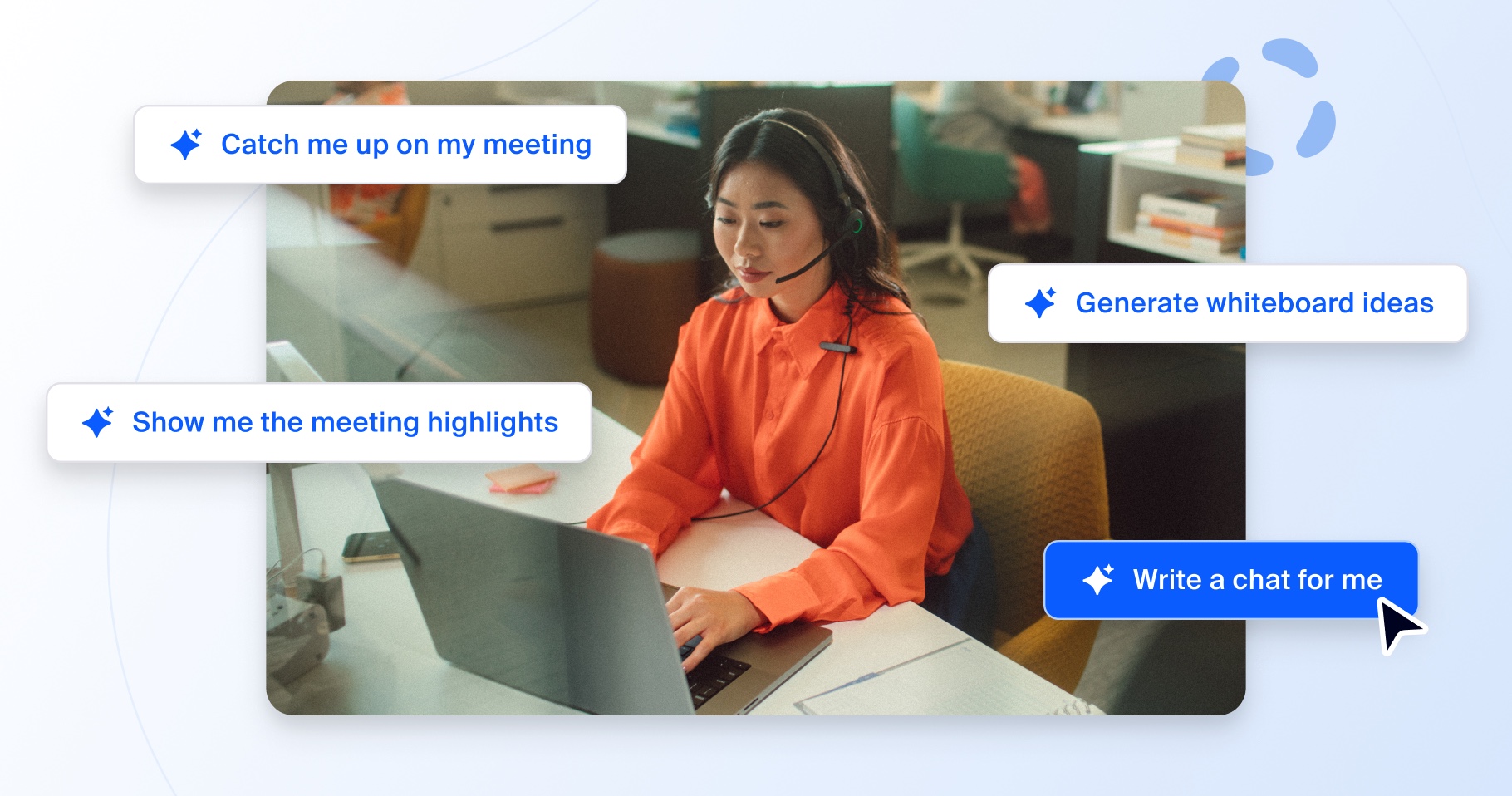
Meet Zoom AI Companion, your new AI assistant!
Boost productivity and team collaboration with Zoom AI Companion, available at no additional cost with eligible paid Zoom plans.
Our Internal Audit team estimates up to 80% in time-savings for documenting business processes with Zoom Docs and Zoom Meetings, bolstered by Zoom AI Companion.
Updated on February 13, 2025
Published on September 09, 2024


There’s a large gap between people who are skeptical about artificial intelligence (AI) and those who are convinced it’s going to make our lives infinitely easier. To help everyone understand how new technology can fit into everyday workflows, we like to showcase ways that we use AI Companion to produce better results in less time.
We want to walk you through one of our latest process changes by one of our own teams, where we estimate that we were able to reduce our work time by up to 80% by easily converting discussions from a Zoom Meeting to an actual deliverable with Zoom Docs and AI Companion. While our use case example is one specific team with one specific task, there’s a clear opportunity for people to utilize transcripts and AI Companion to package all of the knowledge and information that happens in Zoom Meetings.
Our internal audit team has worked to leverage automation for one of our more time-consuming tasks: writing process narratives that accompany process flowcharts as required documentation for internal and external auditors regarding compliance with the Sarbanes-Oxley Act (SOX). For those who aren’t familiar with SOX compliance, here’s a quick summary.
US public companies are required to comply with the US Sarbanes-Oxley Act (SOX Act) of 2001, which requires compliance with authoritative guidance defined by the Securities and Exchange Commission (SEC) and Public Companies Accounting Oversight Board (PCAOB).
To support this effort and adherence to SOX compliance requirements, both company management and external auditors must gain an understanding of end-to-end transactional processes that may present a material risk to complete and accurate financial reporting. The industry standard way to complete this is to review a documented business process flowchart and narrative as well as perform a live walkthrough of a financial transaction to assess the design and effectiveness of financial and related IT processes.
For Zoom’s internal audit team, each year involves evaluating over 60 processes, comprising more than 100 walkthrough meetings with business stakeholders. Historically, this required manual note-taking in meetings, note consolidation, and manual documentation drafting.
Drafting narratives and documenting procedures performed in walkthrough meetings takes a tremendous amount of time. In response, our internal audit team got to work finding the best, most efficient way to get the information from our internal stakeholders into an easily digestible format that we can ensure we understand and that auditors can leverage to support SOX compliance processes.
Based on our team’s experience, a detailed process narrative can take anywhere from one to two weeks to draft, edit, validate, review, and finalize without the use of AI Companion. By simplifying the first step of that process with AI Companion, our process of transforming a transcript into a draft narrative took our team just under five minutes to complete. There still needs to be manual editing and team validation, but the initial effort of turning meeting notes into a usable draft document is significantly reduced. Here’s how our team did it:
The above process was designed to create, edit, and maintain SOX business process narratives, as well as decrease the time our stakeholders currently spend drafting and revising required documentation. Saving time creating narratives gives us more time to perfect that output, and more importantly, re-prioritizing time to focus on evaluating and managing areas of higher risk in financial reporting.

Convert a Zoom Meeting transcript into a useful document that you can edit. Directly in Zoom Docs, prompt AI Companion to make easy edits and transform your content.
We don’t think that this process is only useful for highly specific compliance tasks. You can use AI Companion to help parse Zoom Meeting transcripts any time someone verbally explains something in a Zoom Meeting and there’s a subsequent desire to document what they’re describing. Think of the application when creating detailed desktop procedures, documenting business requirement documents (BRDs), or future state process documents as part of complex digital transformation initiatives.
Of course, AI Companion isn’t fully producing review-ready narratives with the click of a button. As you can see from the steps above, it still requires humans to meet for that initial transcript, use prompt engineering, and edit manually toward the end of the project.
But those first steps—transcribing a meeting, pulling out the important parts, and collecting it in the right framework—were all completed with AI Companion, giving our internal teams more time and energy to finalize a critical deliverable. After these processes are established for a common use case, they can be completed in as little as five minutes.
Our Internal Audit team estimated that after the above process is used, getting final edits, stakeholder alignment, and formal approvals could take up to an additional 4 to 20 hours across multiple teams over weeks. If we take a generous estimation, that’s a time savings of at least 80%, if not 90%. And because it all happens directly in Zoom Docs, there’s no copying and pasting back and forth between an AI tool and your word processor. Zoom Docs and AI Companion work together in a graceful cohesion that couldn’t be done before.
In the end, this isn’t about improving a single process. It shows that there’s more than one way to complete a task, and when you use Zoom Workplace and AI Companion, you’ll have more options to focus on the parts of your work that need your attention. Because AI Companion is included with the paid services assigned to Zoom accounts without additional cost, we’re leveling the playing field and making these time-saving tools more accessible.